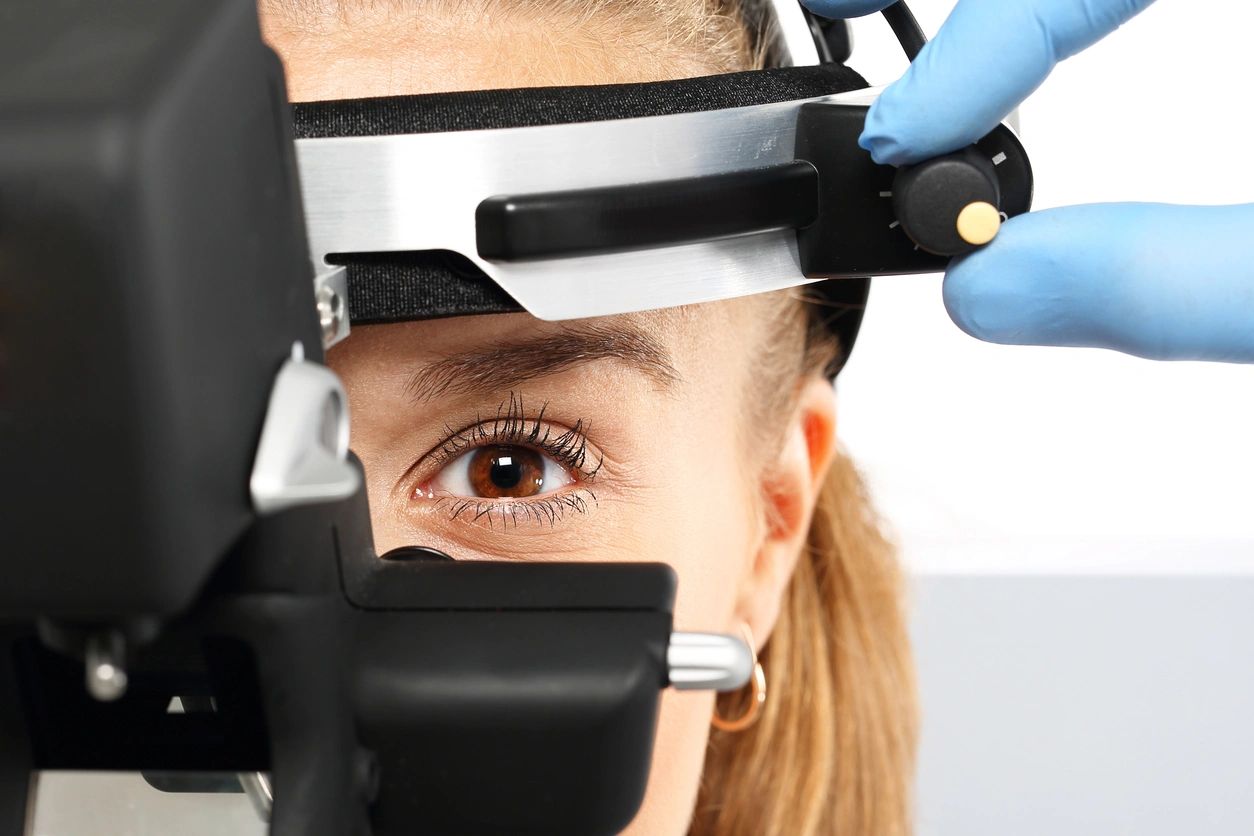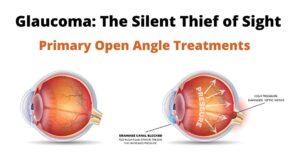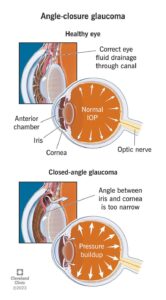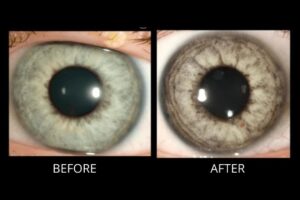Glaucoma part 1

Glaucoma part 1
Dr. Claire Arcidiacono, ND
Glaucoma is one eye condition that can become very dangerous very rapidly. If you notice symptoms that are coming on very rapidly it is imperative that you receive treatment to avoid any complications. Throughout this 2 part blog series I will be reviewing exactly what glaucoma is, as well as the different types and how they are diagnosed. I will also be reviewing the symptoms and risk factors. From there I will be reviewing the most common complications that can occur. Lastly I’ll be reviewing how to help reduce your risk factors and how you can help the symptoms of glaucoma that you experience.
What exactly is glaucoma? Now I bet your thinking – oooh I know, it’s an increase in the pressure in the eyes! While increased eye pressure does play a part in glaucoma it’s not the whole story. Glaucoma is an eye condition that damages the optic nerve. This is the nerve that brings visual information from your eyes to your brain. While this damage is often related to an increase in eye pressure it can happen with normal eye pressure.
There are 5 types of glaucoma. The first type is called open –angle glaucoma. This is the most common form of glaucoma. Basically what happens is that parts of the fluid drainage system in the eye don’t work properly. Thus the fluid builds up leading to an increase in eye pressure. (1) Please see the below picture to see what this looks like when compared to a healthy eye. (2)

The next type is called acute angle-closure glaucoma. You may have heard this referred to as closed angle glaucoma. This is where a bulging of the iris completely blocks drainage of fluid from the eye. This can cause pressure to increase rapidly in the eye. (1) For a picture of what this would look like compared to a healthy eye please see the following picture. (3)

The next type is called normal tension glaucoma. This is where the optic nerve becomes damaged, however the pressure in the eye is normal. It is theorized that the damage may be due to a reduction in blow flow to the nerve caused by atherosclerosis. (1)
Glaucoma can also occur in children, childhood glaucoma is another form of glaucoma. Children may be born with glaucoma or develop it. Lastly there is pigmentary glaucoma, which is where small pigment granules flake off from the iris and block or slow fluid drainage in the eye. This cause’s an increase in pressure over time. For what this may look like please see the attached picture. (4)

How are you diagnosed with glaucoma? The doctor may perform several tests to determine if you have glaucoma. First they can measure the intraocular pressure called tonometry. The doctor can also test for optic nerve damage by doing a dilated eye exam and imaging test. The doctor can also check for areas of vision by doing a visual field test. The doctor may do an exam called pachymetry to measure corneal thickness. Lastly the doctor may do gonioscopy to inspect the drainage angel. (5)
In our next blog we will cover symptoms, risk factors, complications and the best ways to reduce glaucoma risk factors and symptoms.
Sources:
- https://www.mayoclinic.org/diseases-conditions/glaucoma/symptoms-causes/syc-20372839
- https://www.laverneoptometry.com/blog/primary-open-angle-glaucoma
- https://my.clevelandclinic.org/health/diseases/angle-closure-glaucoma
- https://ophthalmologybreakingnews.com/unraveling-the-mystery-of-pigment-dispersion-syndrome
- https://www.mayoclinic.org/diseases-conditions/glaucoma/diagnosis-treatment/drc-20372846
